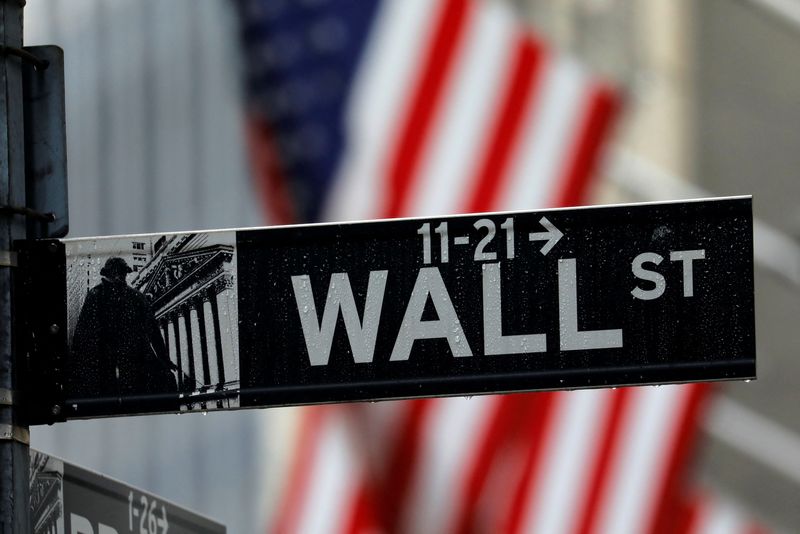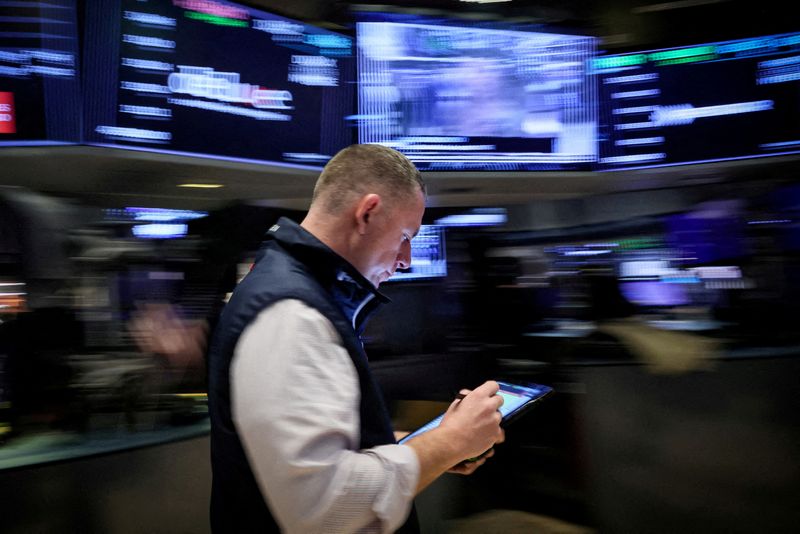By Saqib Iqbal Ahmed
NEW YORK (Reuters) - Wall Street's most-watched gauge of investor anxiety logged its largest ever intraday jump on Monday and closed at its highest since October 2020, as traders scrambled to hedge against market volatility during a global selloff fueled by U.S. recession fears.
The Cboe Volatility Index jumped to a high of 65.73 before the market open, up about 42 points from its close on Friday. The index pared gains and closed at 38.57, its highest close in nearly four years.
The S&P 500 was down as much as 4.3% on Monday and closed down 2.98%. The benchmark index has lost more than 8% from a record high reached last month.
The surge in the VIX, which measures investor demand for protection against stock swings, dwarfed moves in the volatility index that took place during past bouts of intense selling - including the Covid-related massive selloff in March 2020, when the S&P 500 sank more than 10% in a single day.
Joe Tigay, portfolio manager for Rational Equity Armor Fund said the VIX’s move, which comes on the heels of a three-day selloff that began on Thursday, was "very, very unusual."
"There's no question that last week something was broken (in markets) and it's going to take some time to fix this damage," he said
SHATTERED CALM
Investors believe there are several factors driving the sharp rise in the volatility gauge, including a rapid unwinding of strategies that bet on continued low market gyrations, under–hedged traders rushing to protect their downside and poor trading liquidity around the open of U.S. trading.
The return of volatility to markets follows an unusually long period of market calm, where the S&P 500 went 356 sessions without a 2% or larger move lower, the longest such streak since 2007.
That period of placid trading, along with big gains in stocks earlier this year, produced an environment ideal for “short-volatility” strategies, which thrive when market gyrations are muted. The strategies come in various flavors, including exchange-traded funds that profit from calm markets and options selling strategies that generate income when gyrations are low.
The rush to exit these positions all at once can boost market volatility beyond what a regular drop in the market would, strategists said.
"(There is an) unwind of short volatility trades that were prevalent into July - and this unwind is likely exacerbating VIX levels," Brent Kochuba, founder of financial insights company, SpotGamma, said.
BLAME 0DTE?
Growth in popularity of short-dated options, known as 0DTE options, may have contributed to Monday’s VIX surge, said Jim Carroll, portfolio manager at Ballast Rock Private Wealth.
These options, which expire at the end of the trading day, are favored by investors seeking to protect against short-term market fluctuations.
But as volatility surged over the last few days, investors have urgently reached out for longer term hedges, Caroll said.
Because 0DTE options do not figure in VIX calculations but longer-term ones do, the shift may have caused the volatility index to spike, Carroll said.
LOW LIQUIDITY
The high VIX reading, calculated using real-time quotes for certain S&P 500 Index options, may have also been affected by a lack of liquidity outside of regular trading hours, Chris Murphy, co-head of derivatives strategy at Susquehanna International Group, said.
The VIX hit 65.73 at 8:37 a.m. (1237 GMT), prior to the start of regular trading, when trading conditions might not be as liquid as during regular hours.

BUY SIGNAL? While there is no telling how long market volatility will last, some investors see a jump in the VIX as an opportunity to buy stocks on the cheap.
"It's tough to say where it will peak at, but our back-testing suggests that the S&P 500 is a buy on a 12-month forward basis when the VIX is above 35," Lori Calvasina, head of global equity strategy research at RBC Capital Markets, said in a note. When the VIX closes above 35, the S&P has on average gone on to rise 6.5% and 14.5%, over the next three and six months, respectively, an RBC analysis showed. "A 40 VIX implies 2.5% daily moves in the S&P 500, so levels above there are difficult to sustain outside of a major crisis," Little Harbor Advisors' Thompson said.
